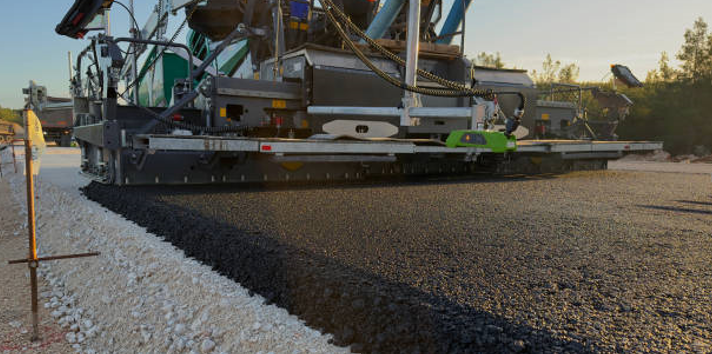Paving Under Pressure: Tackling Asphalt Challenges in Tight and Tricky Sites

Asphalt paving is rarely a straightforward process.
While large, open roadways allow for ample working space, the reality of modern infrastructure projects often demands precision in far more constrained conditions.
Working in tight spots presents the asphalt paving company involved with the project with several additional engineering and logistical challenges, as these areas are, by their nature, not as easy to access or get in and out of as in more open spaces.
Navigating Underground Services
Gas lines, telecommunication cables, water mains, and other underground services are a big concern for asphalt paving projects that are being completed in close quarters near these types of installations. Damage to these services can be very costly and time-consuming to repair and dangerous for all involved. Community services and traffic are also negatively affected by these damages.
Contractors typically take a few steps to avoid as much damage to these subterranean services as possible such as:
- Comprehensive service locating. This can be done with ground-penetrating radar, local utility maps, and service detection equipment to figure out what is underground before excavation or milling work begins.
- Protective work zones. Protective barriers or milled depth adjustments to paving can be used where services are closer to the ground.
- Planning with utility owners. Communicating as early and as often as possible with these local utility owners can make all the difference in paving the way to move ahead with full knowledge and understanding of these service locations.
Helping to ensure that paving projects can be completed with no damage or impact to the community’s underground services.
Working in Confined Zones
Urban renewal projects, laneway upgrades, and car park reconstructions often involve areas where manoeuvring large machinery is difficult. Access restrictions may prevent standard paving equipment from operating efficiently.
To address this, contractors adapt by:
- Using compact paving equipment designed to operate in narrow corridors or small radii.
- Sequencing works in stages, allowing one section to be completed before moving on to the next to maximise efficiency.
- Coordinating material delivery to minimise stockpiling, which can restrict movement further.
For tight zones, flexibility in methodology is just as important as technical capability. Each site requires a bespoke approach to balance accessibility and quality outcomes.
See also: How Generative AI is Transforming Customer Success with Intelligent Agents
Active Roadways and Traffic Management
Busy streets, roads, and other heavily used areas are sometimes paved with live traffic present. This creates its own specific set of engineering and logistical problems, such as:
- Navigating active traffic while working
- Safety for workers and the public
- Need for traffic management
Working in active areas is something that can be solved with strong and open communication between construction teams and road and traffic authorities/stakeholders and with great traffic management strategies like the following:
- Scheduling paving work during off-peak hours, like nights, or weekends.
- Well-planned detour routes with signage and traffic controllers.
- Physical separation of the worksite from vehicles and pedestrians using barrier systems and delineation tape.
Busy road asphalt paving can only produce a quality outcome when traffic management and safety are of utmost importance.
Sequencing and Coordination
In confined and service-rich environments, sequencing is not simply a matter of efficiency—it is a safety-critical practice. Paving activities must be carefully staged to ensure that underground services remain protected, access routes are maintained, and quality is not compromised.
For instance, contractors may mill and remove existing pavements using asphalt profiling before resurfacing. This process allows for precise depth control, reducing the risk of exposing or damaging utilities beneath the surface. Sequencing also extends to coordinating with other trades, such as electrical or drainage teams, who may require site access before final surfacing.
Meticulous scheduling ensures that each stage of work builds seamlessly into the next, avoiding delays and ensuring consistency in compaction and finish.
Safety Under Pressure
The inherent risks of tight worksites—limited visibility, proximity to services, and the presence of live traffic—make safety paramount. Leading contractors establish strict safety frameworks including:
- Site-specific risk assessments that identify hazards unique to each location.
- Toolbox talks and daily briefings to keep crews aware of evolving site conditions.
- Emergency response planning tailored to confined areas where access is limited.
Investing in safety is not just a regulatory requirement—it directly impacts productivity and project success by minimising disruptions from incidents or near misses.
Technology as a Support Tool
Modern paving projects benefit significantly from technological integration. Digital tools help contractors overcome the challenges of tricky sites by improving accuracy, coordination, and efficiency.
Examples include:
- GPS-guided equipment for precise depth and alignment control.
- Real-time project management platforms to coordinate logistics across constrained areas.
- Thermal imaging to monitor asphalt temperature and ensure consistent compaction, even when working in small, staggered sections.
The use of such innovations elevates the standard of asphalt paving services, particularly in environments where margins for error are minimal.
Community Engagement and Communication
Working in complex sites often means working close to businesses, residents, or high-traffic areas. Disruption is inevitable, but it can be managed effectively through proactive communication. Contractors who engage with stakeholders early—providing clear timelines, explaining detours, and responding to concerns—help maintain public trust and reduce complaints.
Transparent communication not only smooths project delivery but also enhances the reputation of the contractor and the client organisation.
Delivering Quality Under Constraint
Despite the pressures of confined zones, underground service risks, and active traffic, quality cannot be compromised. Proper compaction, smooth finishes, and long-lasting durability remain the benchmarks of success. By applying rigorous quality assurance measures—including density testing, surface inspections, and material compliance checks—contractors ensure that even the most complex sites meet performance standards.
Asphalt paving in tight and tricky sites demands more than technical proficiency—it requires a holistic approach that integrates planning, safety, sequencing, and stakeholder management. With underground services to avoid, confined work zones to navigate, and live traffic to accommodate, these projects push asphalt contractors to operate with coordination and precision.

